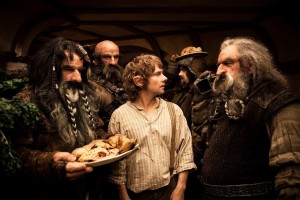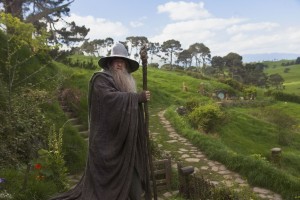
As such, it integrates and expands upon points made in three previous articles published here on TheOneRing.net: an article defending the prospect of a trilogy; an article arguing the likely structure and break-point of film one; and an article analysing the official Hobbit figurine descriptions leaked online a couple of months ago.
It attempts to triangulate a sense of the films’ structure and content from two things: the available information that has been released about the films; an appreciation for how stories are constructed. With regard to the latter, two points are worth emphasising: in an adaptation as in any story, characters are key, and they must progress through an arc. Naturally, there will be spoilers.
Furthermore, and related to this, any story must have three parts: a set-up, a conflict, and a resolution. This tripartite structure must appear in each film, and from a broader perspective each film is itself one of these parts of the trilogy as a whole.
It is also important to remember that a successful adaptation does not focus on recreating blow-by-blow scenes of the source material. When doing an adaptation, the writers must focus on key themes and key characters.
This is all the more important in the case of a story like The Hobbit, where much is left to the imagination and thus the film makers must fill in the gaps. Whereas a tightly written, dialogue-centric scene like Riddles in the Dark will likely be on screen for about as long in the film as it took to read in the book, some other scenes with less dialogue will need to be hugely expanded, as film is a visual medium. It will take time to show what Tolkien may have described in a sentence (he was notoriously abstract about battle scenes, for instance).

We must also remember that, according to the appendices, the whole point of Gandalf taking an interest in Thorin’s quest, was his worry that, with Smaug ensconced in the Lonely Mountain, the north was vulnerable to attack, and thus if the Shadow grew again out of Mirkwood, the forces of good would be outflanked from Mordor and the North.
In light of this, The Hobbit breaks naturally into three distinct parts, each with its own narrative structure, story and character arcs, each of which can constitute a film without sacrificing anything, and without ‘stretching’ the narrative.
In places the following has requires leaps of imagination. Where this is evidently the case, I hope it is at least plausible.


